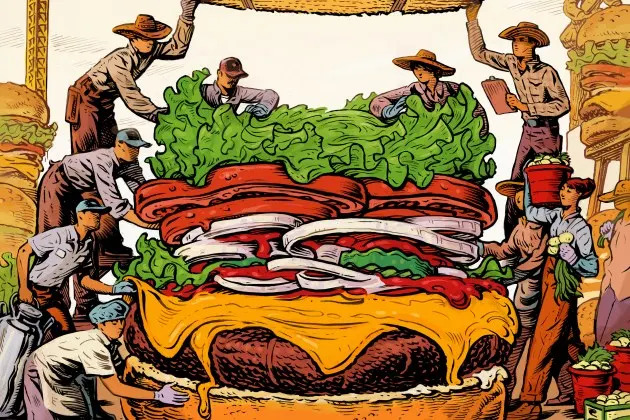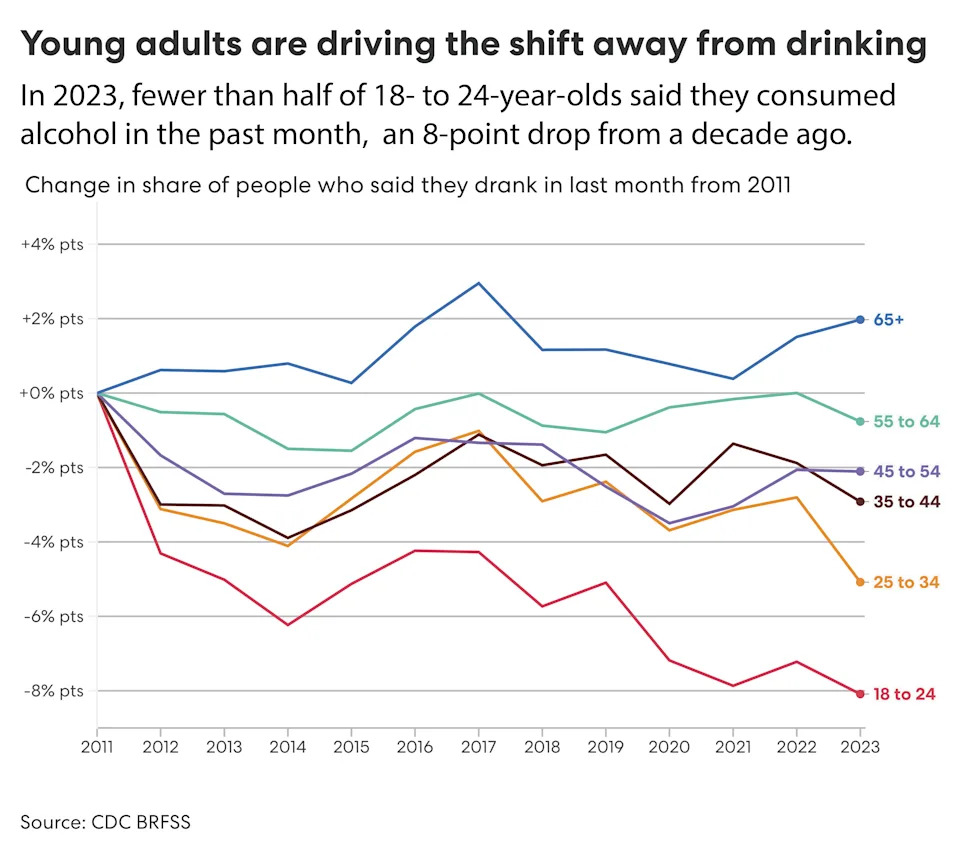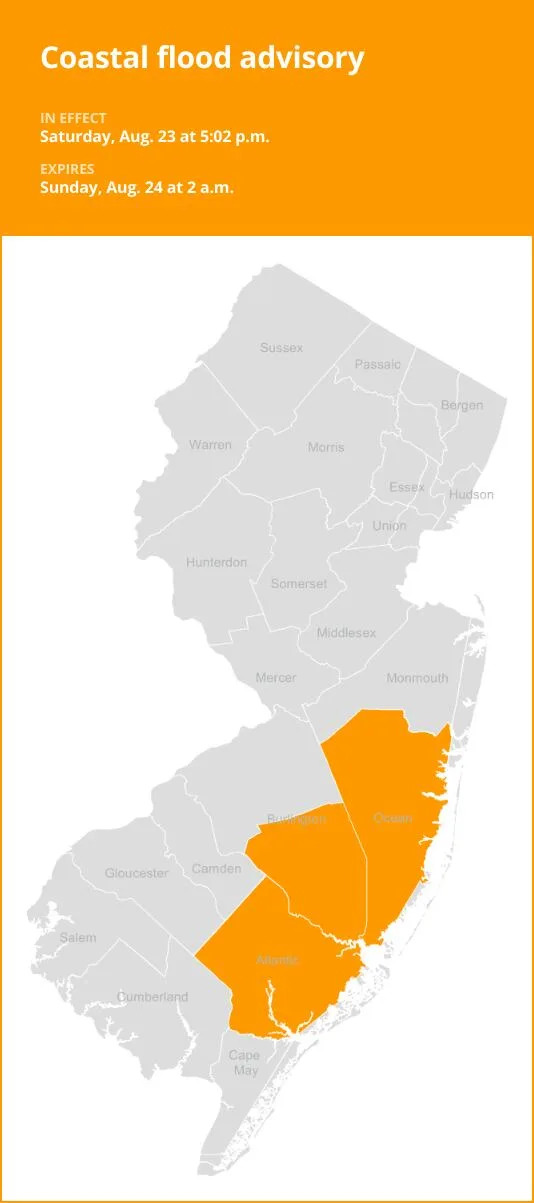
Few foods are more recognizable — or more American — than the cheeseburger. It’s a staple of fast food and backyard barbecues, served in rations to soldiers and on silver platters to presidents. Politicians invoke it as a symbol of abundance, nostalgia, even patriotism. Its parts — beef, cheese, lettuce, tomato, onions, bun — are so familiar they barely register as something grown, cultivated, or hauled.
Americans consume an estimated 50 billion burgers each year. Together, those billions of burgers represent a vast system that spans thousands of miles and millions of immigrant workers, most of whom never appear in the advertising.
More from Rolling Stone
To understand just how dependent American agriculture is on immigrant labor, one need only trace the anatomy of a cheeseburger: onions from Idaho, lettuce from Arizona, beef from Kansas feedlots, cheese from Wisconsin dairies.
Each ingredient offers a glimpse into the people who grow, process, and deliver it — and the immigration policies that threaten to upend the system.
“More and more of our farmers are at the point of last resort when it comes to labor,” says James O’Neill of the American Business Immigration Coalition. “There is no area of agriculture that is currently not touched by the labor shortage.” He adds, “If half the labor is gone, production is cut in half. Supply is halved, but demand stays the same.”
Latino immigrants make up the majority of the U.S. agricultural workforce. Federal data from 2021 to 2022 shows that nearly seven in 10 crop workers were born outside of the country, and roughly 42 percent were working without legal authorization.
At the same time, farming-dependent counties during the recent election overwhelmingly supported Donald Trump, whose immigration agenda includes sweeping deportations. In April, Trump signed a series of executive orders compelling local authorities to cooperate with federal immigration enforcement.
One of the first areas the administration has targeted has been agriculture. The Department of Homeland Security has begun carrying out large-scale worksite raids, including on farmland, prompting many farmworkers to stay home. The result is a system under strain. Or, as Shay Myers, one of the country’s largest onion farmers, puts it, “We don’t grow food in this country without immigrants. Period.”
Onions
From the air, Myers’ Owyhee Produce — an expansive Idaho onion operation — looks like a patchwork of dusty rectangles: more than 1,600 acres of onions, lined with drip tape. On the ground, it’s a dance of precision and coordination: trucks backing up to conveyors, automated sorters humming in the warehouse, and a crew of 150 workers, almost all of them immigrants, scattered across the farm.
Myers is not a quiet farmer. On TikTok, where he has nearly 700,000 followers, he posts candid videos in ball caps and flannels, calling out immigration policy as directly as he would a storm on the horizon.
“There’s not a single person in our operation who isn’t brown,” he says. “Fifteen years ago, tractor drivers were retired white guys or the owner himself. Now? They’re all from Mexico. Everyone.”
His farm produces around 200 million onions each year — enough to supply 10.5 million people annually. That accounts for about five percent of all onions consumed in the U.S. If there’s a slice of onion on your burger, there’s a real chance it came through Myers’ shed.
Among those who’ve made that possible is Veronica, 31. She came to the United States from Mexico as a toddler and started working on the farm at 18, already a mother of one. Over the next decade, she learned to operate machinery, manage shipments, and eventually run entire facilities. “It was long hours, six days a week,” she says. “And I had three kids by then.”
But the pressures she feels aren’t just professional. Veronica’s immigration status remains in limbo.
“I’ve been here since I was two,” she says. “I’m from Mexico, but I don’t know Mexico. We don’t have a home there. We don’t have anything.”
More broadly, she says, mass deportations would leave a huge hole in the food system. “It would be a disaster,” she says. “I don’t think there will be people who want to do the kind of job that immigrants do. There just won’t be enough people willing to do the work and keep up to feed everybody.”
Cheese
Antonio first came to the United States in 2008, crossing the border without documentation, desperate for work. On a Wisconsin dairy farm, he labored nearly nonstop — he says he didn’t rest more than three days in two years — sending money back to support his family in Mexico. Eventually, he returned home. But the economic instability pushed him to try again. This time, he entered legally on a tourist visa with his wife and two sons. When the visa expired, they stayed. “We made a life here,” he says. “We had to.”
Today, Antonio runs daily operations at a Wisconsin dairy. He started as a milker, then moved into animal care, maintenance, and eventually management. His day begins at 5 a.m., checking in with the night shift, assigning tasks, and treating sick animals. He now supervises a crew, most of whom, he says, share his story. “Only a few were born here,” he says. “The rest are like me — people trying to survive.” Statewide, the numbers back him up: A 2023 report from the University of Wisconsin–Madison found that 70 percent of all dairy workers in Wisconsin are undocumented.
On his farm, Hans Breitenmoser, whose family dairy produces five semitruck loads of milk per week — much of it destined to become cheese and food-service slices — operates in good faith.
“When someone comes to my farm, they show up armed with documentation,” he says. “And as an employer, it’s my obligation to look at that documentation and assume it’s legitimate.” But he, also knows that many farmworkers likely live without legal immigration status. “Everybody understands that.”
Beef
Jeff George’s feedlot in Finney County, Kansas, turns out 100,000 cattle a year, or more than 55 million pounds of beef. That includes the ground meat found in fast-food chains, school cafeterias, and home kitchens across the country.
The yard itself is vast — more industrial than pastoral. Rows of pens stretch for acres, bordered by long feed troughs and access lanes. Water trucks roll past bunkers stacked with silage.
“This process goes on seven days a week,” George says. “It doesn’t matter whether it’s Easter or Christmas. There’s somebody always here at the yard.”
Of the 52 people on his payroll, 44 are immigrants. They show up at 4:30 a.m., ride pens, monitor feed, check water systems, and treat sick animals.
After the feedlot, most of the cattle are shipped to nearby meatpacking plants, where they’re processed, sorted, and packed for national distribution. These plants, too, run on immigrant labor. George estimates as much as 85 percent of the workforce across the Kansas beef industry is made up of immigrants working under all kinds of statuses.
All told, Kansas exports close to $2 billion in beef each year. But despite the size of the industry, or perhaps because of it, says Matt Teagarden, head of the Kansas Livestock Association, the labor pool is stretched thin. “There’s no slack in the workforce,” he says. Feedlots, dairies, meatpackers, and oil and gas operations all draw from the same labor pool, leading to what he calls a constant “trading” of workers. The consequences of mass deportation or visa restrictions, warns Teagarden, would be swift and far-reaching. “We can import workers, or we can import more of our food,” he says. “That’s the choice.”
Lettuce
In Yuma, Arizona, Kristen Smith Eshaya oversees a sprawling romaine operation. Her farm grows roughly 2,000 acres of vegetables. From around October to March, nearly all of the romaine consumed in the U.S. comes from the region’s desert fields.
Each 30-acre plot is its own fast-moving machine: Tractors shape beds, irrigation teams manage the flow from desert canals, and field crews walk row by row to thin, weed, and harvest. A single crew of 30 workers can cover a field in a day. Thinning alone requires speed and experience. Most of Eshaya’s workers are Latino — some U.S.-born, others crossing the border from Mexico. Many are on temporary H-2A visas. “They have to look quickly and know which plant looks healthier, and then take out the other with a hoe,” Eshaya says. “It’s skilled labor.”
Eshaya adds, “Everybody is watching. If raids start happening, and people stop showing up for work, we can’t replace them.”
Bun
The bun may be an afterthought when it comes to cheeseburgers, but it’s often the most industrially produced. Across the country, large-scale bakeries and frozen-food factories produce millions of hamburger buns each day for fast-food suppliers and grocery-store chains. These facilities rely heavily on immigrant labor: Within the U.S. food-processing industry, immigrant workers represent almost 34 percent of the workforce in commercial bakeries.
Tomatoes
Briana Giampaoli’s family farm in California produces 45 million pounds of tomatoes each year, but with local labor drying up, and the cost of guest-worker visas rising, she says the future of American farming depends on immigration reform. Without it, fourth-generation farms like hers won’t survive.
Best of Rolling Stone
Sign up for RollingStone's Newsletter. For the latest news, follow us on Facebook, Twitter, and Instagram.






Comments